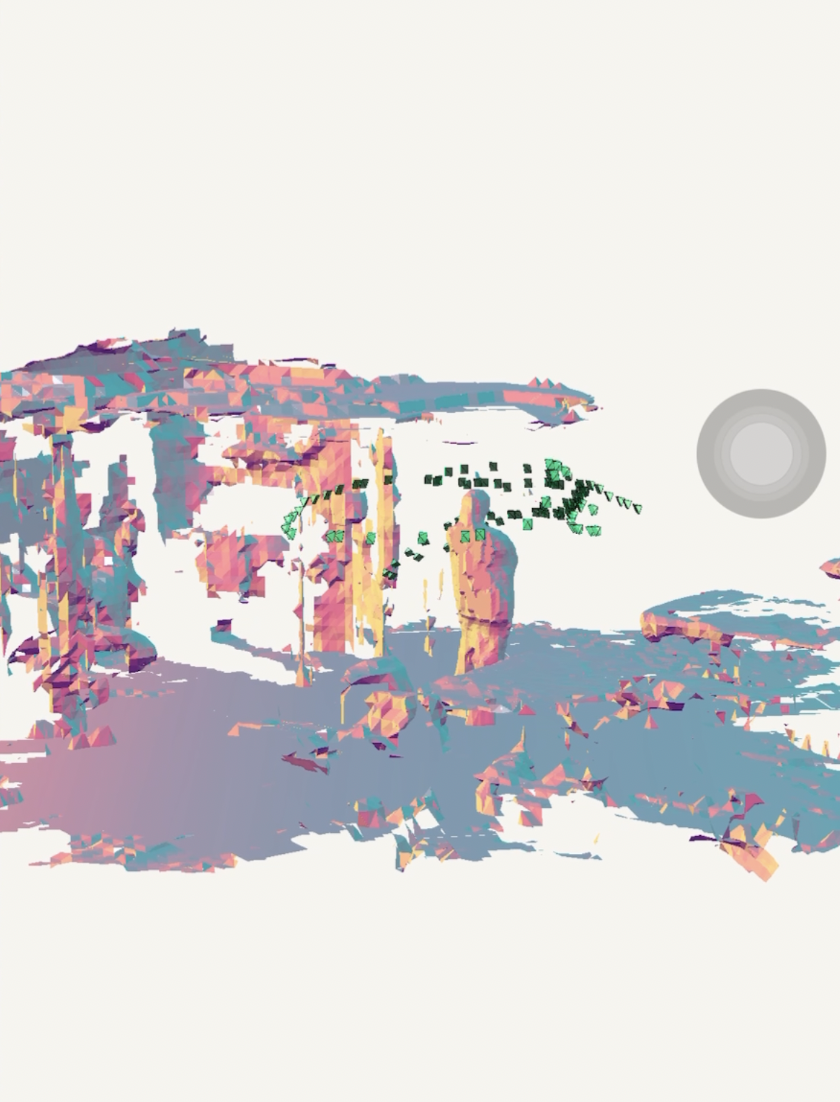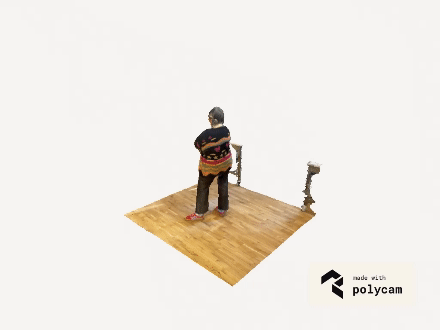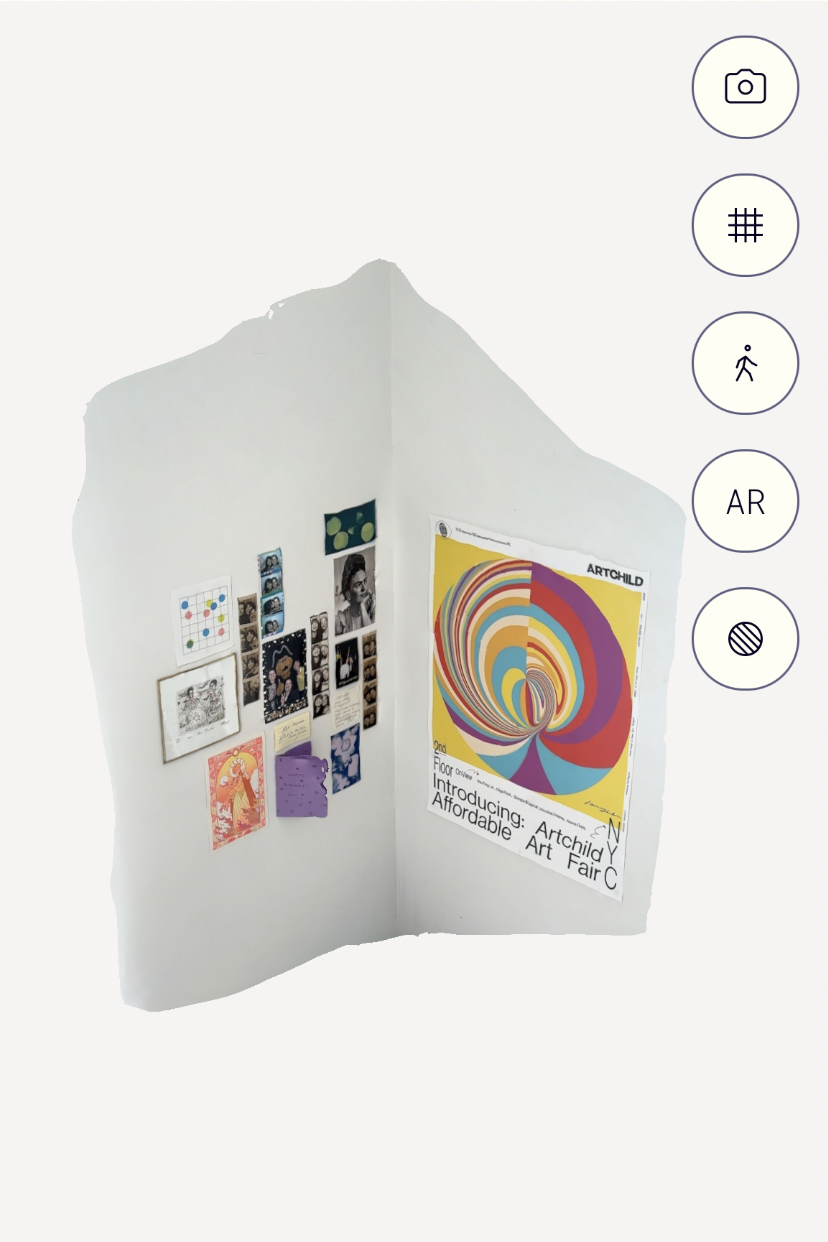New Portraits
Week 3- Lighting and Sound
Ideas for final project
Reading - The Work of Art in the Age of Mechanical Reproduction, Walter Benjamin
Week 2- Introduction to Depth Kit
Steps for calibration
Week 1 - Introduction/History of Portrait
Reading - Sculpture as the Sum of Its Profiles: Francios Willeme and Photosculpture in France, 1859-1898
Portraits - make two portraits, one traditional of a person and one of something representing a person.
![]()
![]()
![]()
![]()
![]()
![]()
Ideas for final project
1. Recording sessions with drag performers. Focusing on their journey and how they started drag performances and their costumes. With a 360 view we think we can get a nice shot of their hair/costume - which is an important part of the persona they are creating.
- Artists that Kay reached out: (clickable links)
Charlotte Harlotte
Sweaty Eddie
Willy Killigan
Erma Fiend
We booked two slots for the media commons room - so depending on their availability we would want to record 1-2 performers.
2. Japanese game show aesthetic and maybe live stream the video?
Cindy introduced the show called “Kasou Taishou” which has been on air since 1979. We thought it would be funny to disguise and have costumes to represent these objects/things etc. The show itself is very funny and seeing people stand and act to represent a shape from a 360 angle could be funny.
Reading - The Work of Art in the Age of Mechanical Reproduction, Walter Benjamin
>>> Notes
A work of art has always been reproducible. Replicas were made by pupils in practice of their craft, by masters for diffusing their works, and, finally, by third parties in the pursuit of gain. - From a photographic negative, for example, one can make any number of prints; to ask for the ‘authentic’ print makes no sense. In photography, exhibition value begins to displace cult value all along the line. It is no accident that the portrait was the focal point of early photography. The cult of remembrance of loved ones, absent or dead, offers a last refuse for the cult value of the picture. For the last time the aura emanates from the early photographs in the fleeting expression of a human face.
But only a few decades after its invention, lithography was surpassed by photography. For the first time in the process of pictorial reproduction, photography freed the hand of the most important artistic functions which henceforth devolved only upon the eye looking into a lens.
Even the most perfect reproduction of a work of art is lacking in one element: its presence in time and space, its unique existence at the place where it happens to be. The presence of the original is the prerequisite to the concept of authenticity. The situations into which the product of mechanical reproduction can be brought may not touch the actual work of art, yet the quality of its presence is always depreciated. - Precisely because authenticity is not reproducible, the intensive penetration of certain (mechanical) processes of reproduction was instrumental in differentiating and grading authenticity.
The concept of aura which was proposed above with reference to historical objects may usefully be illustrated with reference to the aura of natural ones. We define the aura of the latter as the unique phenomenon of a distance, however close it may be. To pry an object from its shell, to destroy its aura, is the mark of a perception whose ‘sense of the universal equality of things’ has increased to such a degree that it extracts it even from a unique object by means of reproduction.
It is significant that the existence of the work of art with reference to its aura is never entirely separated from its ritual function. In other words, the unique value of the “authentic” work of art has its basis in ritual, the location of its original use value.
Two polar types stand out; with one, the accent is on the cult value; with the other, on the exhibition value of the work. Mechanical reproduction of art changes the reaction of the masses toward art. The greater the decrease in the social significance of an art form, the sharper the distinction between criticism and enjoyment by the public. The decisive reason for this is that individual reactions are predetermined by the mass audience response they are about to produce, and this is nowhere more pronounced than in the film.
The definition of the aura as a “unique phenomenon of a distance however close it may be” represents nothing but the formulation of the cult value of the work of art in categories of space and time perception. Distance is the opposite of closeness. The essentially distant object is the unapproachable one. Unapproachability is indeed a major quality of the cult image. True to its nature, it remains “distant, however close it may be.” The closeness which one may gain from its subject matter does not impair the distance which it retains in its appearance.
>>> Response
At first, the argument of how distance creates and preserves the aura was not clear to me but now that I think about it now even in galleries where there’s a physical line or tape in front of the art work so that you can’t get very close to paintings/sculptures/installations. Somehow because of this you know that the artwork is precious/or expensive. I personally don’t think it creates the “aura” since it’s been taken away from it’s original place. But maybe this aura can only be applied to frescos/paintings that were in a palace etc. A phototograph carries its aura within itself, it’s not necceraily site specific. I’m not talking about the merchandise or the reproductions though.
Photogtaphy and film changed how art was perceived. Now you can go up close into details or watch things in slow motion and see how movement works etc. So my questions is what happens to aura since we don’t have the “distance” anymore but we are up close.
Another thing is that, I never thought abt it but paintings were meant to be seen not with masses but individuals. On the other hand, since it was expensive in its era, photography and especilly film were to be seen by masses. So you enjoy them with other people. That feels like it’s in their nature to have a exhibition value. Paintings had initialy it’s cult value and then with galleries and museums it shifted towards exhibition value. I wonder what the cult value is for photography and film.
Week 2- Introduction to Depth Kit
Steps for calibration
computer password: production370
1. Open Depthkit Release
2. Check if the "sensor connected" is 7. If yes, then you're good to go. 3. Place the calibration boxes behind the curtains.
4. Start calibration.
5. Place the Floor Chart #11 on the floor as if it is facing Camera 3.
6. Start floor calibration. Then, press stop.
7. Remove the floor chart. Bring in the calibration boxes.
8. Place the calibration boxes in between two cameras in 3 different positions: tight-medium-far and press "start sampling" each time you move the boxes.
9. Make sure that the two corners of the boxes are facing the two cameras: in between two cameras the boxes should be flat against. (See image)
10. When you're done press "stop calibrating" and press "start steaming".
11. Check calibration quality.
Overall notes about cameras:
a. Next to camera numbers there are two circles with an arrow. Camera 3 doesn't have an arrow - it means that Camera 3 is our main camera. When shooting, we gotta face Camera 3.
b. Cameras should be at a 20-degree angle except the camera below Camera 3 - that one should be at a 10-degree angle.
c. There was something about the plugs but i don't remember now??
d. Turn on the lights by using the switches on the back.
Week 1 - Introduction/History of Portrait
Reading - Sculpture as the Sum of Its Profiles: Francios Willeme and Photosculpture in France, 1859-1898
>>> Notes
For Rodin, the various postures and attitudes of the body were created by its own profiles. He rotated the model, illuminating it so its silhouette would be clear throughout the revolution.
New phenomenon in the Parisian art world, "photosculpture" or "photo-sculpture" and with its inventor François Willeme.
Photosculpture was the adaptation of photographic portraiture to the construction of three-dimensional portrait sculptures using photographic profiles taken from sequential positions encircling the sitter. The entire process was firmly based on the idea that the sum of all its profiles would yield the volumetric whole.
There are essentially two distinct yet similar processes involved in Willeme's photosculpture: "mechanical sculpture," sometimes called "automatic sculpture," and " photosculpture" itself. What was thus achieved was a cylindrical assembly of wooden pieces with a void in the center corresponding to the shape of the figure.
All the critical articles on Willeme reported that photosculpture was feasible and that the sculptor needed only a studio in which to operate.
*Photosculpture in England, at least Claudet's verson of it, did not last beyond 1866; after this date there is no mention of it in the photographic press.
Photosculpture, in short, was directly linked to modern life since its subjects, like those of photography, were necessarily a part of contemporary society and, by consequence, ultimately realistic.
Photosculpture was "avant tout un art intime et un art mondain." Photosculpture's primary values were its ability to record a living likeness faithfully, to capture the look of detailed fashions, and to render the appearance of silks, velvets, and laces.
His unheroic figures from the contemporary worlds of society and entertainment were given him, of course, in part by the exigencies of the photographic medium.
>>> Response
It’s fascinating to see that apps like Polycam still uses similar techniques and technologies. For example, “Photo Mode” in Polycam requires you to take images of a subject from many different perspectives. This is the same idea depicted in Figure 5. Willeme’s Studio. Back then, it required financing a studio large enough to accommodate 24 cameras, now you can use your phone and just move around the object. The idea and the main technologies are the same but the tools has improved basically.
I think I’m just a bit lost in differences of machines. We have Willeme’s mechanical sculpture, the photosculpture and the physionotype. At first, I thought Willeme’s photosculpture is the same as the other photosculpture mentioned in the reading? I guess it differs in used tools. Photosculpture uses negative glass plates which means the image can be enlarged. It also uses 2 pantographs which helps choosing a desired height for the clay model.
When I read about the steps and learn about the tools, in my mind this process sounds expensive. Since you need a -big enough space, multiple cameras, pantographs, assistants, final materials (terracota, biscuit, bronze, alabaster, plaster), and plates- it feels like it’s an expensive method and something only the higher society can afford. The reading on the other hand discusses how this is an inexpensive process . HOW COME? I think the main benefit is that the client can receive the portrait in 48 hours, whereas for a traditional sculpture this can take several months.
Each method added a small touch to its antecedent. Whether it’s engineering, traditional art of sculpture or photography, the artist/engineer/inventor would require to know about all about these intricacies.
Portraits - make two portraits, one traditional of a person and one of something representing a person.
Portrait #1 of Priyanka



Portrait #2 of something representing me - I am a sum of my loved ones and my own memories



Lipsum™
Integer turpis massa, varius ultricies est sed, aliquet feugiat enim. Nulla facilisi. Ut in justo in ex faucibus ultricies. Proin id erat quis lorem vehicula commodo. Phasellus pharetra libero pretium ultricies aliquam. Vivamus eleifend, ligula ut venenatis aliquet, massa elit efficitur lorem, fermentum molestie elit ligula in ex. Duis mauris tellus, pharetra et orci a, aliquam imperdiet augue. Pellentesque elit neque, tincidunt sit amet imperdiet eget, porta ut metus. Nulla id leo tortor. Donec elementum ac sapien eget feugiat. Donec lorem dui, vestibulum quis nisl et, feugiat mattis massa.
Phasellus Rez
Praese
Praese
Suspendía
©MMXXI
Integer turpis massa varius
